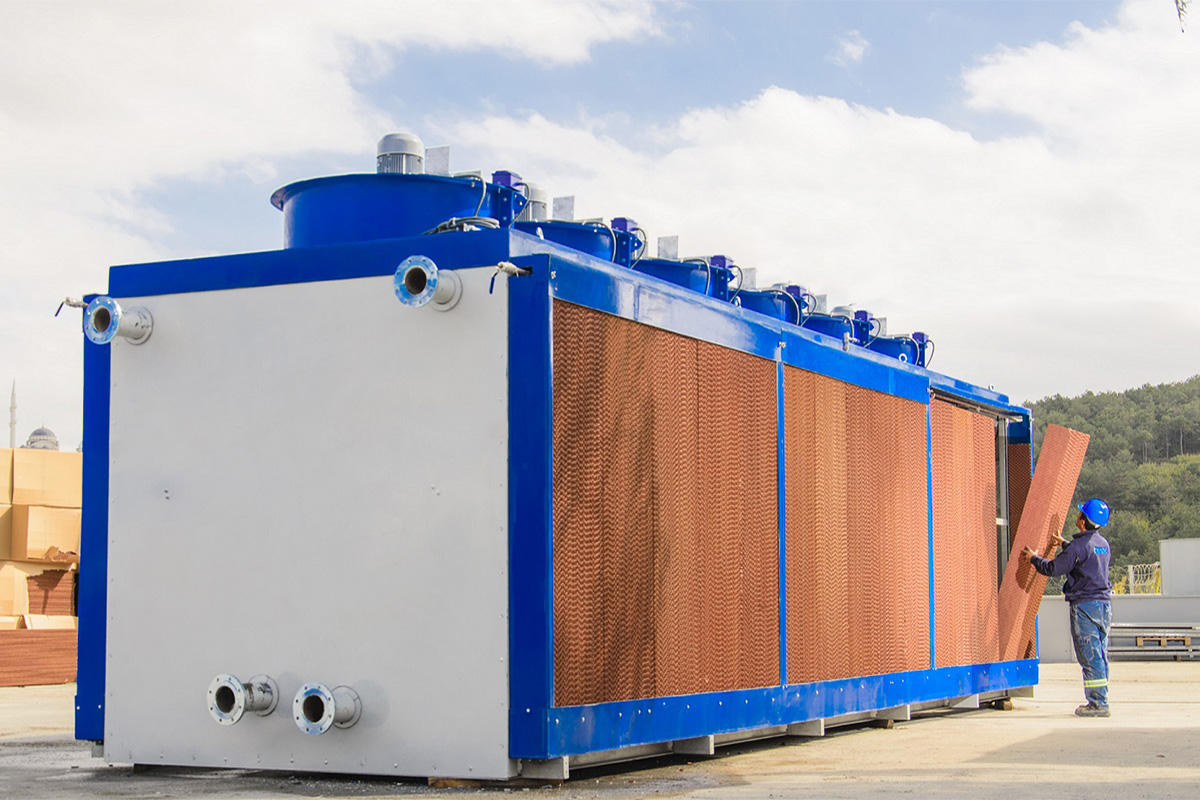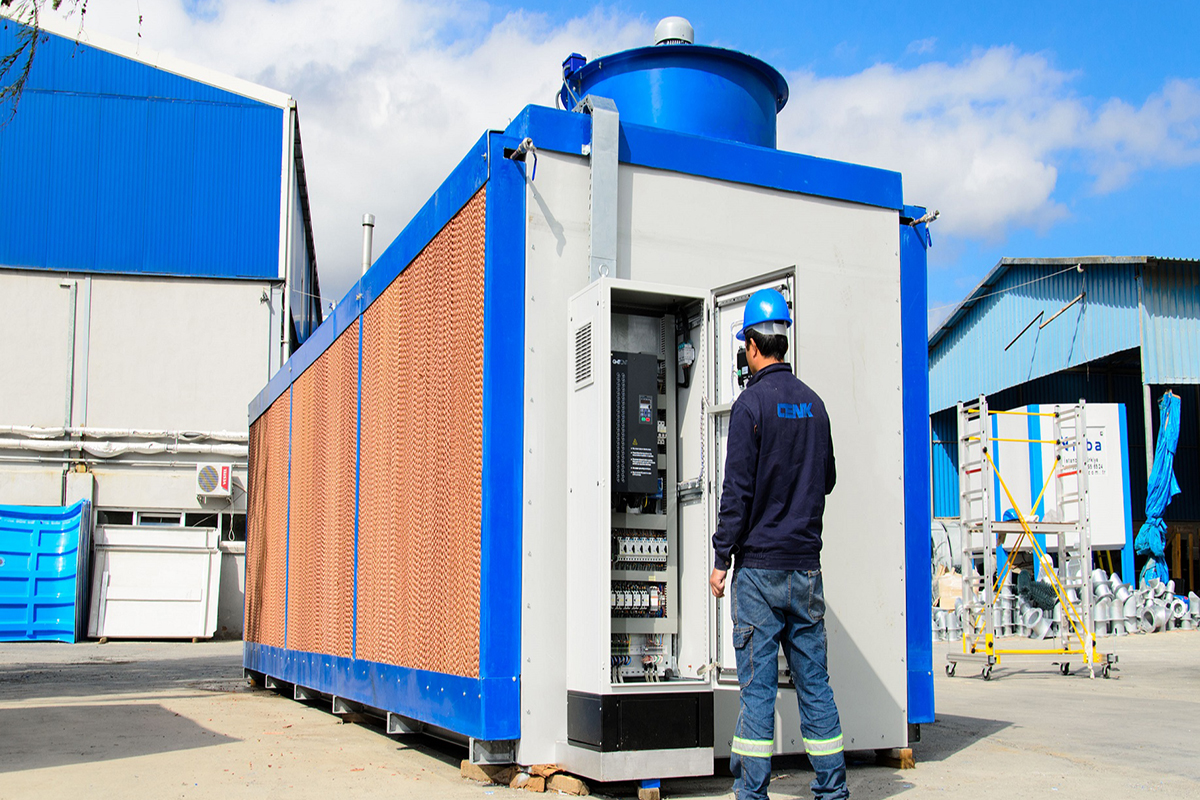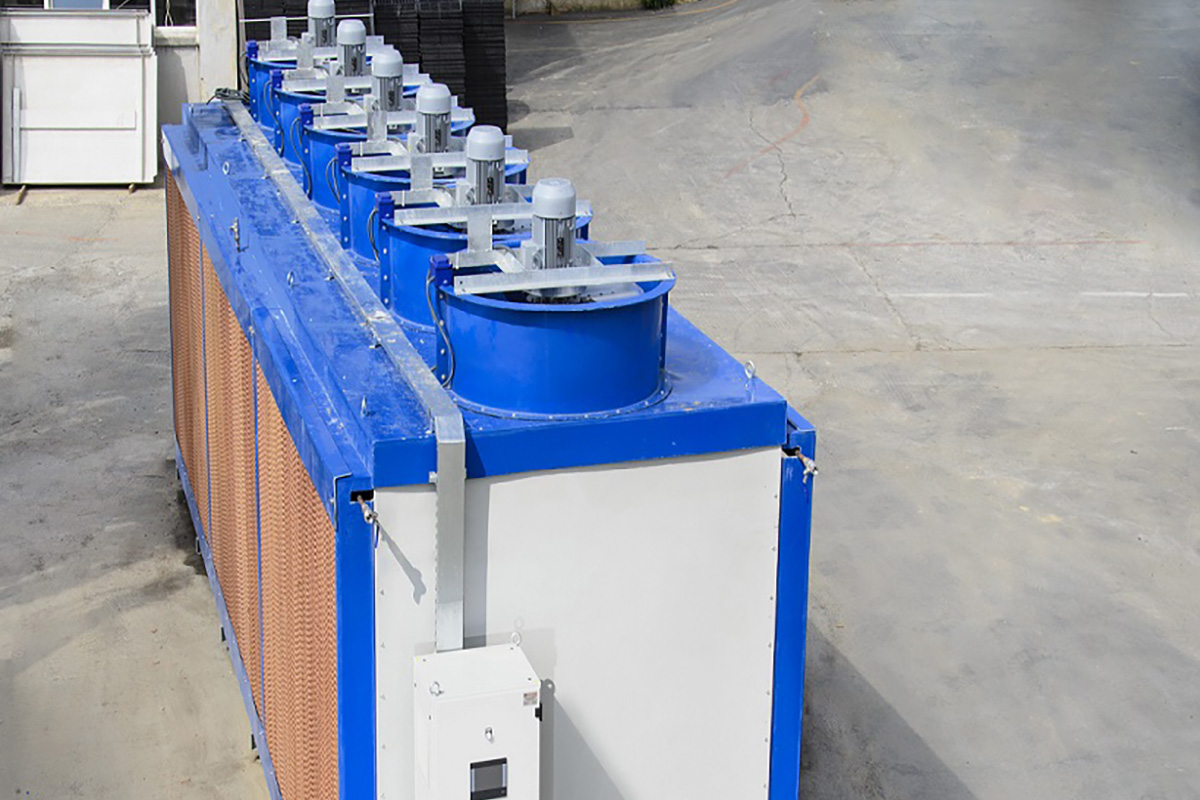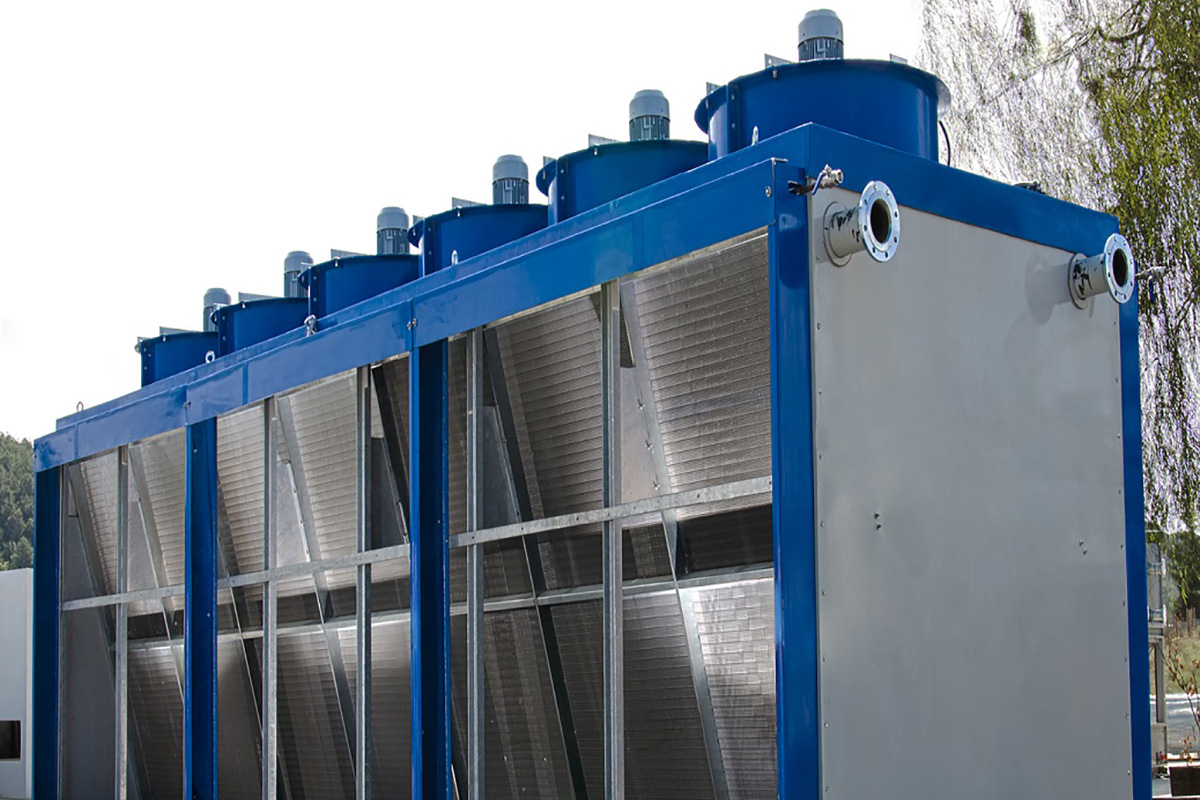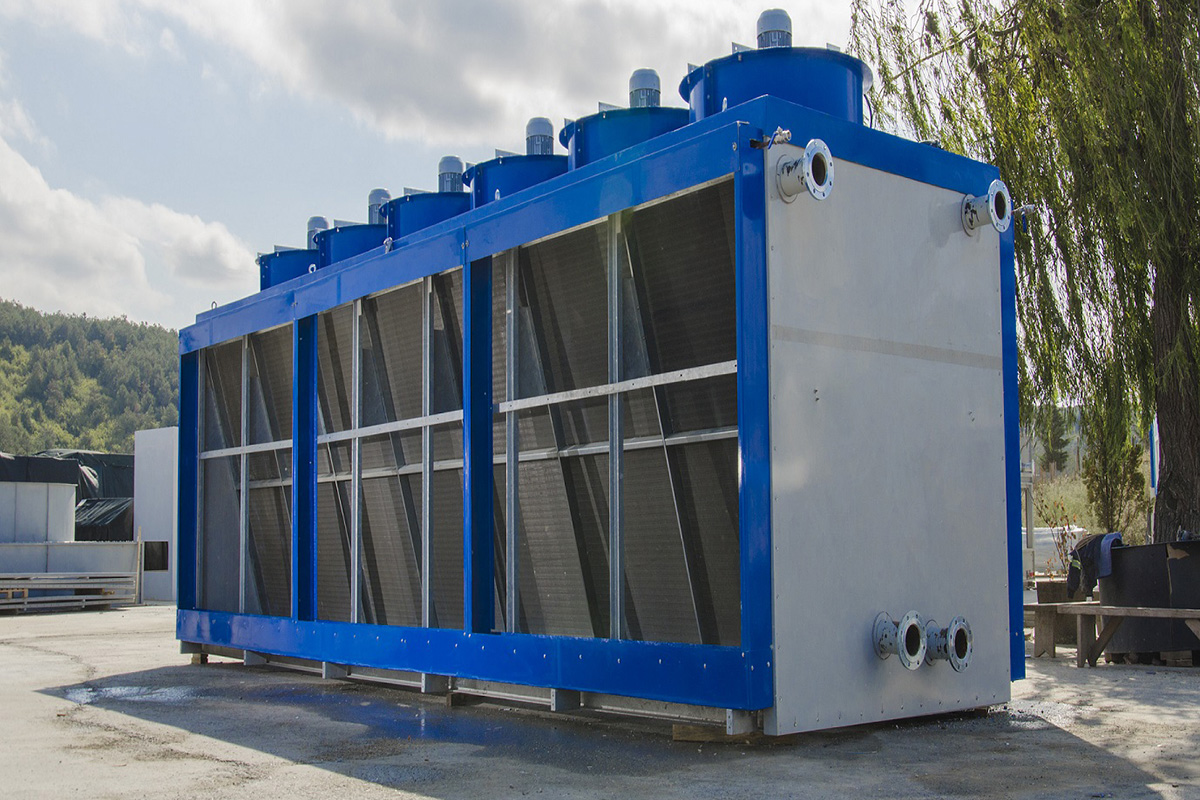CNK ADV & CNK KSV Series
Adiabatic coolers work with the Dry Cooler principle. There is a water spray system to provide extra cooling. When the fluid in the system needs to be cooled down to a temperature lower than the outdoor temperature, the pressurized water spray system comes into play, saturates the inlet air and lowers the air temperature below the ambient temperature. The cooled air passes through the tubes, cooling the temperature of the water in the system to a temperature below the outdoor temperature.
The water spray system is thermostat-controlled at certain times during the hottest summer days and provides the required extra cooling. Except summer times, there is no water consumption.
For example, if the inlet air (40% relative humidity) at 35ᵒC dry and 24ᵒC wet bulb temperature is saturated up to 90% relative humidity by spraying water, the inlet dry bulb temperature is reduced to approximately 25ᵒC.
The most suitable material for adiabatic coolers is copper if it is compared regarding performance and economy. One of the most important criteria that affects the life of the dry cooler is the quality of the copper. The thickness of the copper tubes is 0.7 mm.
The lamella material used in dry coolers is aluminum. It would be appropriate to have a lamella thickness of 0.14-0.15 mm depending on the using area. In general implementations, epoxy coated aluminum is preferred to keep lifetime long of the dry cooler.
Cassette material for Dry Coolers is GRP coating on galvanized steel. Preferring GRP coating instead of steel sheet material provides protection against the corrosive effects. Especially in facilities near to the sea, GRP coatings provide great advantages.
In order to stop the risk of freezing in Dry Coolers during the cold winter months, 25%-35% glycol water is added to the cooling water. Dry Cooler design is made in accordance with 25%-35% glycol water.
- Tubes: Copper, Steel, Stainless Steel
- Blades: Copper, Aluminium, Steel
- Main Construction: Galvanized or Stainless Steel
- Coating: GRP, Sheet
- Water Distribution: GRP, PVC
- Shutter: GRP, PVC
- Filling: PVC, PP
- Eliminator: PVC, PP
- Sprinkler: PP
- Deck: GRP
- Fan Base: GRP
- Connectors: AISI 304
- Deck Ladder: GRP, Steel




